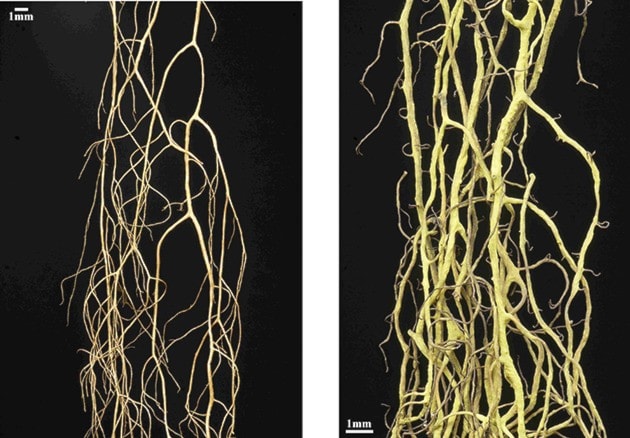A story about lichens has been reported in the New York Times, Scientific American, CBC News, Washington Post, and other news media in Russia, Austria, Finland and around the world – and there's a North Thompson connection.
“This is a big deal for lichenology. It suggests that lichens, or macro-lichens at least, are composed of at least three organisms – an alga, a cup fungus and a yeast fungus.”
That was the reaction of Upper Clearwater lichenologist Trevor Goward to a study published July 21 in Science, one of the world's top academic journals.
"Until now, lichenologists believed that lichens contain only two partners. This new paper by Toby Spribille and co-authors has changed that.”
The study looked at two related hair lichens. Edible horsehair is a dark brown lichen common at higher elevations in this area. It is eaten by mountain caribou and was an important winter food for First Nations. The Simpcw called it “Wila.”
Tortured Horsehair Lichen, on the other hand, is yellow, poisonous and was carefully avoided.
According to a news report, Spribille's research was inspired by an essay written by Goward, which questioned whether these two lichens, which had recently be found to contain the same genetically identical partners, should be classified as one species (as scientists believed), or whether the Simpcw and other First Nations were right in recognizing them as distinct. Goward argued that the First Nations' perspective was likely the correct one, and predicted that further research would bear this out.
Spribille, a postdoctoral student at the University of Montana (as well as the University of Graz in Austria), teamed up with john McCutcheon, a University of Montana microbiologist.
Together they began looking more carefully at the DNA in both species of lichen.
The dominant fungus in lichens belongs to the group Ascomycete – “the same group that morels and cup fungi belong to”, noted Goward. To Spribille's and McCutcheon's surprise, however, they found that the two hair lichens also contained an entirely different group of fungi – Basidiomycetes, the same group that gilled mushrooms belong to.
Spribille and his co-authors had discovered an entirely new order of fungus, Goward said, "one that lives entirely within lichens and that appears to have done so for perhaps 200 million years.”
The Basidiomycete, which in this case takes the form of a single-celled yeast, proved to be much more abundant in the tortured horsehair lichen than in the edible horsehair lichen. Not only that, this fungus appears to trigger the production of vulpinic acid, the substance that makes tortured horsehair lichen poisonous.
"What this shows,' said Goward, "is that the First Nations people were right: there really are two lichens here. However, to understand this, scientists first had to figure out that lichens contain three partners, not two. This is what Spribille's study has done."
“There is still work to do but the correlations are strong and the outlook promising,” Goward commented. Further work has shown that almost all macro-lichens contain basidiomycete DNA as well as ascomycete.
Toby Spribille has been a frequent visitor to Goward's home near Wells Gray Park. The two have collaborated on several papers together. Spribille was one of the speakers at the Speak to the Wild event that Goward organized in 2013, an event that attracted some of Canada's best known writers, poets, philosophers and naturalists to the Upper Clearwater hall.
